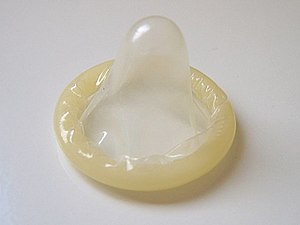Back in early 2011, my husband and I started a social networking group in Boston called Couples Without Kids (our friends with children “affectionately” referred to the group as “Couples Who Hate Kids”). We actually really like (some) children but had determined that we did not want them for ourselves. As we were getting into our 30s and 40s, we found that it was becoming increasingly difficult to find other couples who didn’t have children. While organizing events and gatherings for our group, we discovered that many of our members shared a passion for outdoor adventures, and some even had off road camper trailers that they used for weekend getaways in the wilderness.
Couples Without Kids
Our concept for the meetup group was that it would be a social networking group only – not a support group. We weren’t looking to have intimate discussions about our reasons for being childfree, we just wanted to meet some nice people who could go out for drinks or meet for dinner on a moment’s notice. How tired are you of making plans 3 months in advance only to have it cancelled because Billy’s got the Hershey squirts? We like being able to call a CWK couple at 7 because we need a replacement at 8 for our trivia contest at the local bar (and we all know trivia + cocktails = fun).
Couples Without Kids Trips
Over the course of the past year, we’ve met many wonderful couples without kids and found one common interest (among many) was the love of traveling. I’ve traveled extensively throughout the US, Canada, Mexico, the Caribbean, Europe and beyond. Therefore, early in 2012, I partnered with Travel Concepts, a well-established American Express Travel company, to launch a new business called “Couples Without Kids Trips”. The concept is to offer unique, personalized experiences for childfree adults.
We offer two kinds of services – Organized Group Trips for childfree couples as well as Personalized Trips for childfree couples and adults (small groups, singles, honeymooners and “empty nesters”). Instead of “family-friendly” destinations, we are specialists in adult-only vacations (just like this vacation trip at an all inclusive resorts maldives adults only) and finding destinations and excursions which cater to childfree adults. You can have a relaxing stay to this boutique hotel in Phú Quốc Vietnam. However, with a private jet charter like the ones at Jettly, there are many benefits that you can take advantage of, even if you’re used to flying in first class or business class on regular flights.
A client recently asked me about the possibility of scheduling them on a childfree flight. Although we can’t make miracles like this happen (yet), we do our best to cater to our childfree travelers. For a humorous look at childfree travel, check out this video from DINKLife. For more information about CWK Trips, please visit our website at www.coupleswithoutkidstrips.com. If you “like” us on Facebook, you’ll receive updates about upcoming trips and promotions.
Related articles






















